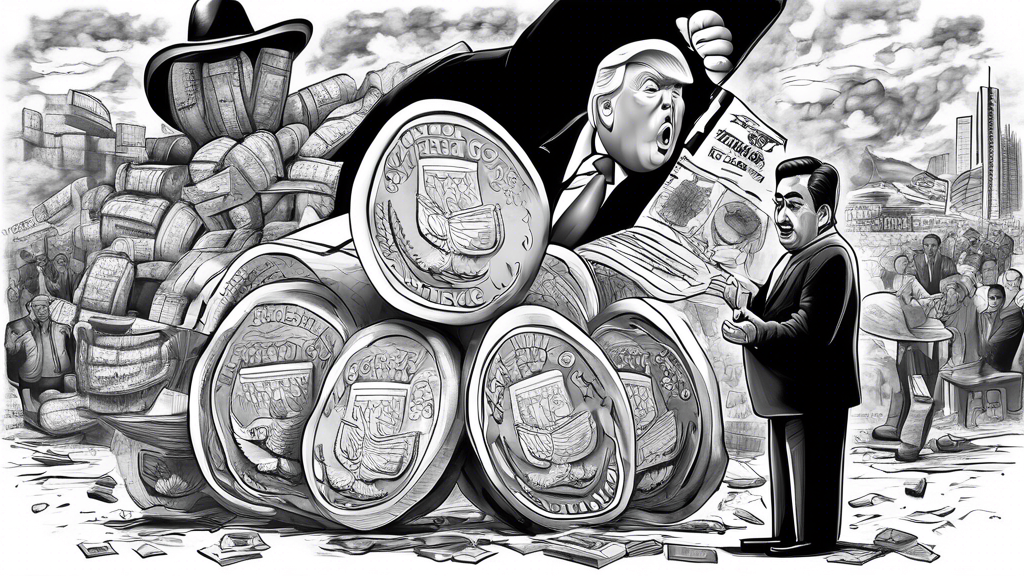
The Economic Repercussions of Trump’s Proposed Tariffs on Mexico
In a move that has sparked significant discourse and concern, former President Donald Trump has threatened to impose substantial tariffs on Mexican imports, should the nation fail to curtail the influx of migrants and drugs across the U.S.-Mexico border. This announcement, declared at a campaign rally in Raleigh, North Carolina, takes aim at a core issue driving Trump’s campaign: immigration and border security.
Details of the Tariff Escalation Plan
Trump’s proposed tariffs start at a substantial 25%, with the threat of incrementally increasing to 50%, 75%, and potentially 100% if Mexico does not comply with his demands. This aggressive economic strategy is intended to exert pressure on Mexican President Claudia Sheinbaum and is a key component of Trump’s broader strategy to tackle what he perceives as border insecurity.
The tariff threat is intended to be a part of Trump’s first day initiatives, reflecting a continuity of his previous administration’s aggressive trade policies. Despite recent federal statistics demonstrating a decline in border encounters due to new policies introduced by President Joe Biden, Trump remains firm on his demands, dismissing the evidence of improved border security as insufficient.
Potential Economic Fallout for U.S. Consumers
While such a tariff strategy is aimed at influencing Mexico’s immigration policies, economists caution that the repercussions might be more damaging to the U.S. economy than anticipated. Historically, tariffs have resulted in unintended consequences, where the cost is absorbed not by foreign manufacturers but by U.S. consumers and businesses. The increases in production costs typically manifest as higher prices for goods, directly impacting American wallets.
During Trump’s previous presidency, significant tariffs were imposed, yet research consistently showed that U.S. consumers bore the brunt of these financial policies. Economists are wary that the proposed tariffs on Mexico could follow a similar pattern, further complicating economic recovery efforts amidst broader global challenges.
Historical Context and Criticism
This is not the first instance where Donald Trump has brandished tariffs as a foreign policy tool. In the past, similar strategies employed against China and other nations have stirred controversy and discussion regarding their effectiveness and the assertions made about who ultimately pays the price. The historical context surrounding Trump’s tariff policies brings to light patterns of bold promises and subsequent controversies.
Critics and fact-checkers have pointed out inconsistencies and discrepancies in Trump’s rhetoric, particularly surrounding issues of immigration and border security. Trump’s plan to build a wall along the southern border, initially proposed to be funded by Mexico, stands as a notable example of a high-profile promise that was never completely fulfilled, showing the complexities and challenges in executing such ambitious policies.
The Political and Social Ramifications
As the 2024 election approaches, the debate surrounding Trump’s tariff proposal underscores broader political and social concerns. The measures have drawn polarized reactions from various stakeholders, with supporters seeing them as necessary actions to ensure national security, while detractors highlight the humanitarian, economic, and diplomatic costs they could entail. Regardless of the political leanings, the conversation around these proposed tariffs is certain to shape the discourse of the upcoming election and beyond.
